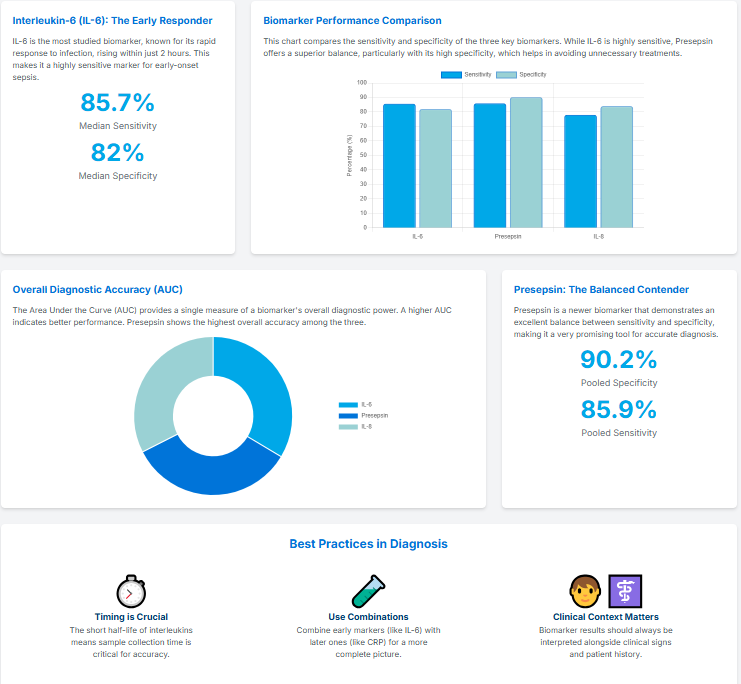Diagnostic Accuracy of Interleukin-Based Biomarkers in Neo-natal Sepsis: A Systematic Review
Fatima Alhassan¹, Bara Elmana², Ahlam Ali³, Hamza Alsheikh⁴, Reem Yousif⁵
Keywords:
Neonatal sepsis, Interleukin-6, Procalcitonin, C-reactive protein, Diagnostic accuracy, BiomarkersAbstract
Background: Neonatal sepsis remains a leading cause of morbidity and mortality, especially in low-resource settings. While blood culture is the gold standard for diagnosis, its delayed results necessitate the use of adjunctive tools. Inflammatory biomarkers, particularly interleukins, are increasingly explored for early and accurate detection.
Objective: To evaluate and synthesize the diagnostic accuracy of inflammatory biomarkers—focusing on interleukin-6 (IL-6), interleukin-8 (IL-8), interleukin-10 (IL-10), C-reactive protein (CRP), and procalcitonin (PCT)—in diagnosing neonatal sepsis across varying clinical and income settings.
Methods: This systematic review included 30 studies assessing biomarker performance against blood culture or clinical sepsis criteria. Sensitivity, specificity, and the area under the receiver operating characteristic curve (AUC) values were extracted and compared across biomarkers and economic contexts.
Results: IL-6 demonstrated sensitivity ranging from 54% to 94% and specificity from 65.7% to 100%, with AUC values between 0.793 and 0.988. PCT showed high diagnostic performance with sensitivity from 52.3% to 100%, specificity from 59% to 100%, and AUC values up to 1.00. CRP had broader variability (sensitivity: 48–98.9%; specificity: 52–100%; AUC: up to 0.998). IL-8 and IL-10 offered limited and inconsistent evidence, with IL-8 reported in fewer studies (sensitivity: 50–84%; AUC: 0.68) and IL-10 showing low sensitivity (17–43%) but high specificity (87–99%).
Subgroup and Setting Analysis:
- In high-income settings, IL-6 and PCT consistently showed high diagnostic accuracy (sensitivity: 73.1–94%; specificity: 80.2–99%).
- In upper-middle-income countries, PCT and IL-6 maintained sensitivity at 100% and specificity at 96.5%.
- In lower-middle-income settings, CRP and PCT were the most frequently used, with diagnostic metrics comparable to those in wealthier regions.
Conclusion: IL-6 and PCT emerge as the most accurate biomarkers for diagnosing neonatal sepsis across diverse economic settings, mainly when used in combination or serially. CRP remains a valuable alternative in resource-constrained environments. These findings support context-specific adoption of biomarker strategies to enhance early detection and clinical decision-making in neonatal sepsis.
Downloads





